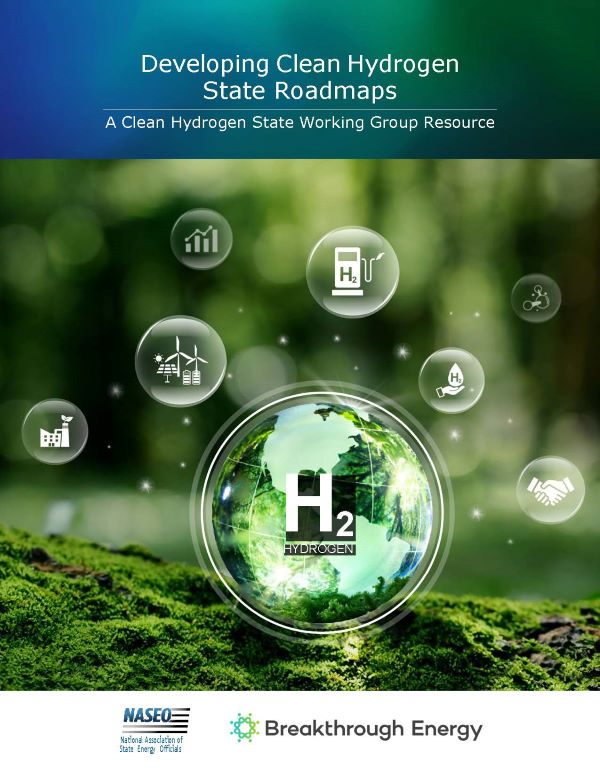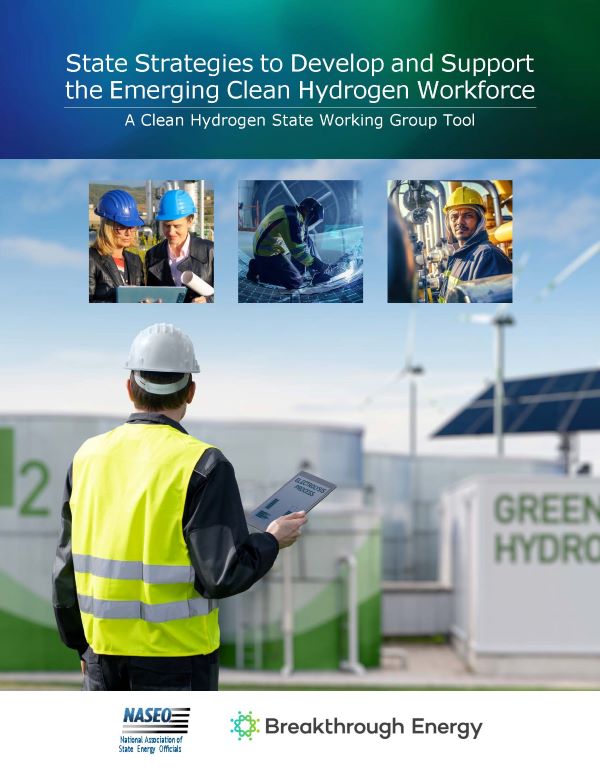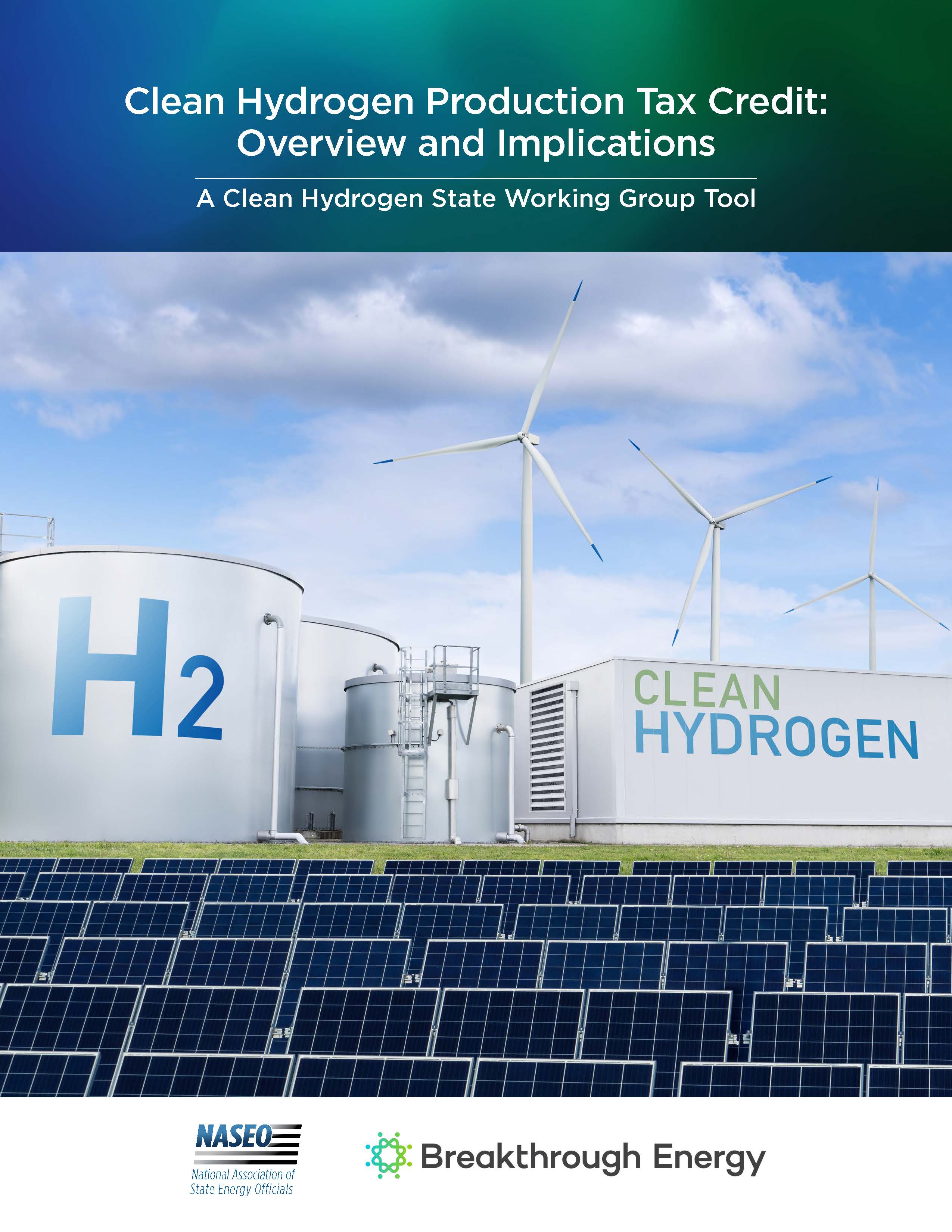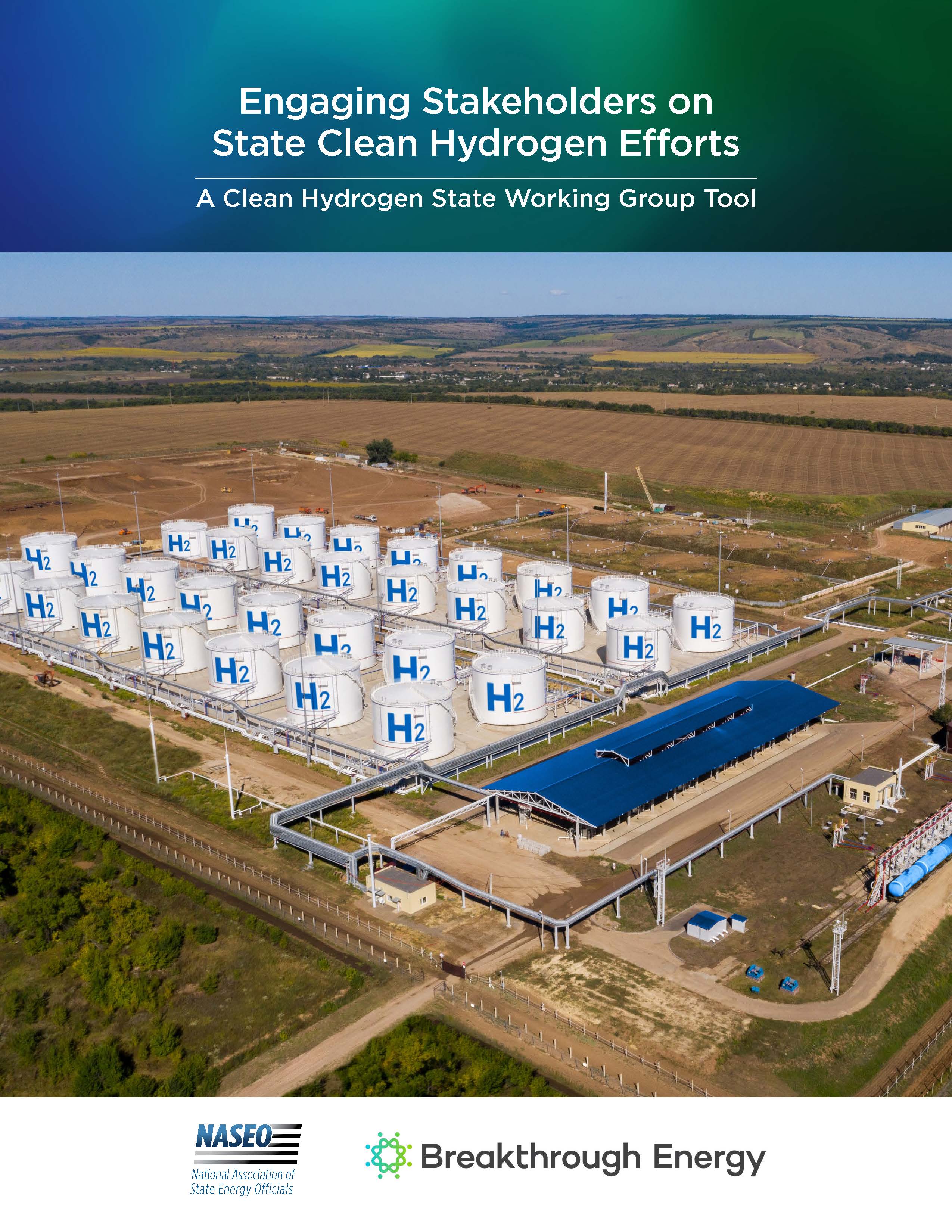
 Hydrogen: Critical Decarbonization Element for the Grid, Manufacturing, and Transportation
Hydrogen: Critical Decarbonization Element for the Grid, Manufacturing, and Transportation
Hydrogen offers potential pathways for decarbonizing the electricity system, hard-to-electrify industrial and heating applications, and heavy transportation as it can be made from non-carbon renewable and nuclear generation as well as from fossil fuel sources that can be coupled with carbon capture, utilization, and storage (CCUS). This new NASEO report provides an overview of hydrogen types, production, and uses, including large-scale and long-duration energy storage to balance variable power generation and demand, and energy and material input for ammonia, steel, fuels, and other production. As research, development, and demonstration (RD&D), environmental policies, economies of scale and scope, economic development programs, and other measures will affect hydrogen’s path, the report outlines potential policy and planning considerations for State Energy Offices. These include supportive policy, program, and regulatory measures, in developing state energy, environmental, and economic development plans.
NASEO Summary of the U.S. Department of Energy (DOE) Office of Clean Energy Demonstration’s (OCED) Regional Clean Hydrogen Hubs Funding Opportunity Announcement (FOA) (Section 40314 of the Infrastructure, Investment, and Jobs Act (IIJA))
NASEO prepared a summary to assist State Energy Offices and their private sector partners in navigating the Regional Clean Hydrogen Hubs FOA. For complete information, please review the full DOE prepared FOA and the relevant IIJA statute, section 40314. Please email Kelsey Jones (kjones@naseo.org) with any questions.
Developing Clean Hydrogen State Roadmaps
This report provides an overview of existing state-led clean hydrogen roadmaps, reports, and studies with guidance on a process that could be replicated in other states. As State Energy Offices explore ways to accelerate the deployment of clean hydrogen in their states and regions, a clean hydrogen roadmap can provide a path forward by offering an analysis of state and regional challenges and opportunities. These roadmaps can outline potential policy, regulatory, and programmatic actions that can support clean hydrogen research, development, and demonstration (RD&D) and provide an overview of the landscape for clean hydrogen in a particular state. Some of the areas to explore through a roadmap include potential end uses, market considerations, the policy/regulatory environment, energy system impacts, infrastructure availability, collaborators and partnerships, and key benefits (e.g., economic development and jobs potential and decarbonization) as well as challenges (e.g., water availability, leakage risks, and cost). A thorough analysis of these and other pertinent topics also provides a State Energy Office with a better understanding of how clean hydrogen fits into their existing state plans and activities.
State Strategies to Develop and Support the Emerging Clean Hydrogen Workforce
This report provides guidance and resources for State Energy Offices to support the emerging clean hydrogen workforce and help their communities maximize the anticipated job opportunities and economic development benefits. State Energy Offices can play a pivotal role in preparing the emerging clean hydrogen workforce by assessing current and future job demand and training needs; facilitating partnerships among employers, workforce agencies, educational institutions, and other partners; and investing in programs and processes that expand access to clean hydrogen careers for historically underserved groups. By incorporating workforce development considerations into their clean hydrogen policies and planning efforts, State Energy Offices can maximize the job benefits of the clean hydrogen transition, while advancing state climate and economic development goals.
Clean Hydrogen Production Tax Credit: Overview and Implications
This tool provides State and Territory Energy Offices with a high-level overview of the proposed guidance for the clean hydrogen production tax credit (45V); implications for states and the private sector; and opportunities for state-level incentives that compliment or expand on the federal tax credit. State Energy Offices are working with public and private partners to explore production, end-use opportunities, related economic development and workforce considerations, private sector investment, and emissions reduction potential of clean hydrogen. An understanding of the 45V tax credit and the different requirements it entails are important to support and move clean hydrogen policies, programs, projects, and planning efforts forward.
Engaging Stakeholders on Clean Hydrogen Efforts
This tool aims to guide State Energy Offices in planning for, implementing, and evaluating stakeholder engagement efforts surrounding clean hydrogen activities by providing a framework, examples of successful strategies, and additional models and best practices to consult. As State Energy Offices continue to explore opportunities for clean hydrogen, conducting meaningful, two-way engagement early and often in the program or policy design process can help build stakeholder support while also improving program and project outcomes, ensuring community benefits, and enabling the success of future hydrogen initiatives. The tool intends to support states engaging stakeholders on a broad spectrum of clean hydrogen activities, including hydrogen roadmaps, policy and program development, and implementation of the Regional Clean Hydrogen Hubs.